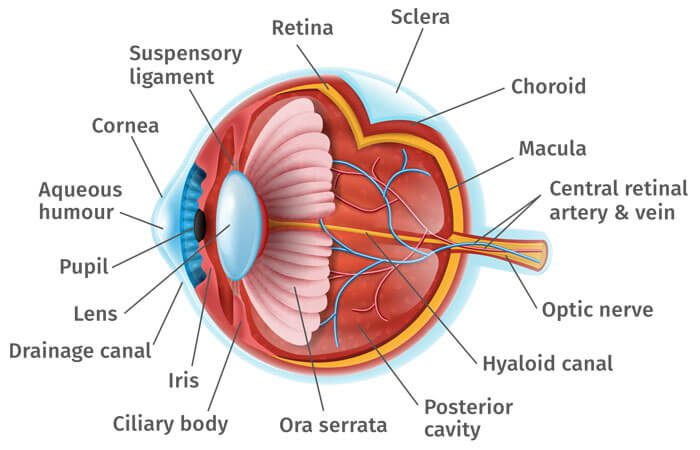About The Center
Felis dictum magnis varius nulla pellentesque tortor pharetra, aptent vitae morbi vulputate accumsan penatibus cum, aliquet rutrum curae conubia est mattis. Mattis vel feugiat ante auctor tortor varius, habitant cubilia pellentesque mi bibendum, iaculis elementum quis ut libero. Pretium porttitor dignissim congue egestas rutrum erat proin iaculis vitae libero arcu euismod, feugiat nam eros sociosqu nisi interdum lacus integer nisl eleifend.
Glaucoma Procedure
What Is Glaucoma?
Glaucoma is a disease that damages your eye’s optic nerve. The disease occurs when fluid builds up in the front part of your eye, increasing the pressure and damaging the optic nerve. When damage to these fibers occurs, blind spots develop. These blind spots, however, usually go undetected until the optic nerve is significantly damaged. If the entire nerve is destroyed, blindness results. Vision loss from glaucoma is permanent but the disease can be slowed down or stopped. This is why early detection is essential.
The most common early treatment for glaucoma includes eye drops or medications and laser procedures to relieve eye pressure and prevent future vision loss. In severe cases, glaucoma surgery like those performed at Pennsylvania Eye & Ear Surgery Center may be necessary.
What Are Glaucoma Surgery Options?
Your ophthalmologist will probably recommend a treatment course that helps eye fluid drain from the eye to reduce intraocular pressure, and thus, lower the chances of causing stress and damage to the optic nerve. Our glaucoma specialists offer some of the latest and most innovative techniques to deliver quality results and years of sustained vision for those afflicted with this disease.
Minimally Invasive Glaucoma Procedures
Clinical research and trials have created new and exciting surgical methods for treating glaucoma patients. These include:
- iStent
Implanted during cataract surgery, iStent includes two two tiny stents that are designed to restore your eye’s natural ability to drain fluid and reduce intraocular pressure. They are the smallest medical implants to be placed in the human body.
- Xen
The XEN Gel Stent allows us to treat patients with moderate to severe glaucoma, with less risk and much faster recovery time than the traditional trabeculectomy or tube shunt. The implant creates a small channel to drain eye fluid and lower pressure.
- Omni
- Hydrus
Laser Surgery
- Laser Peripheral Iridotomy
This is for people who have angle-closure glaucoma or “narrow angles”. The ophthalmologist uses a laser to create a tiny hole in the iris. This hole helps fluid flow to the drainage angle.
- Selective Laser Trabeculoplasty
Traditional Glaucoma Surgeries
- Trabeculectomy
- Glaucoma Drainage Devices or Tube Shunt
Your ophthalmologist may implant a tiny drainage tube in your eye. The glaucoma drainage implant sends the fluid to a collection area (called a reservoir). Your eye surgeon creates this reservoir beneath the conjunctiva. The fluid is then absorbed into nearby blood vessels. Different types of tube shunts exist and your surgeon will recommend the tube shunt best for your glaucoma.
Who Will Perform My Procedure?
Each of our glaucoma specialists is board-certified and fellowship trained. That’s quality and experience you can trust. We utilize the latest technology and enjoy an excellent reputation and high patient satisfaction. From the first moment a friendly staff member greets you, throughout your treatment, you’ll receive compassionate care and personal attention. Here are just a few of our practitioners who perform this procedure:
Christina M. Lippe, MD
Michael A. Malstrom, MD
Mehul H. Nagarsheth, MD
Abhishek K. Nemani, MD
Michael Smith, MD
What Happens After The Procedure?

What Are The Risks Of Surgery for Glaucoma?
The following are (rare) glaucoma surgery risks or side effects to discuss with your doctor:
- Vision loss and blindness
- Bleeding in the eye
- Infection
- Low eye pressure (or hypotony)
- Scarring and surgical failure
- Cataract formation
- Need for additional surgery
Your ophthalmologist will talk with you about the risks and side effects of your particular glaucoma surgery. When it comes to surgical intervention for advanced glaucoma cases, the benefits typically outweigh the risks. Your surgeon will review your unique clinical situation and recommend the best surgical treatment to preserve your vision.
Some material adapted from the American Academy of Ophthalmology.
Footer
Pennsylvania Eye & Ear
Surgery Center
Granite Point
1 Granite Point Dr #200
Wyomissing, PA 19610

